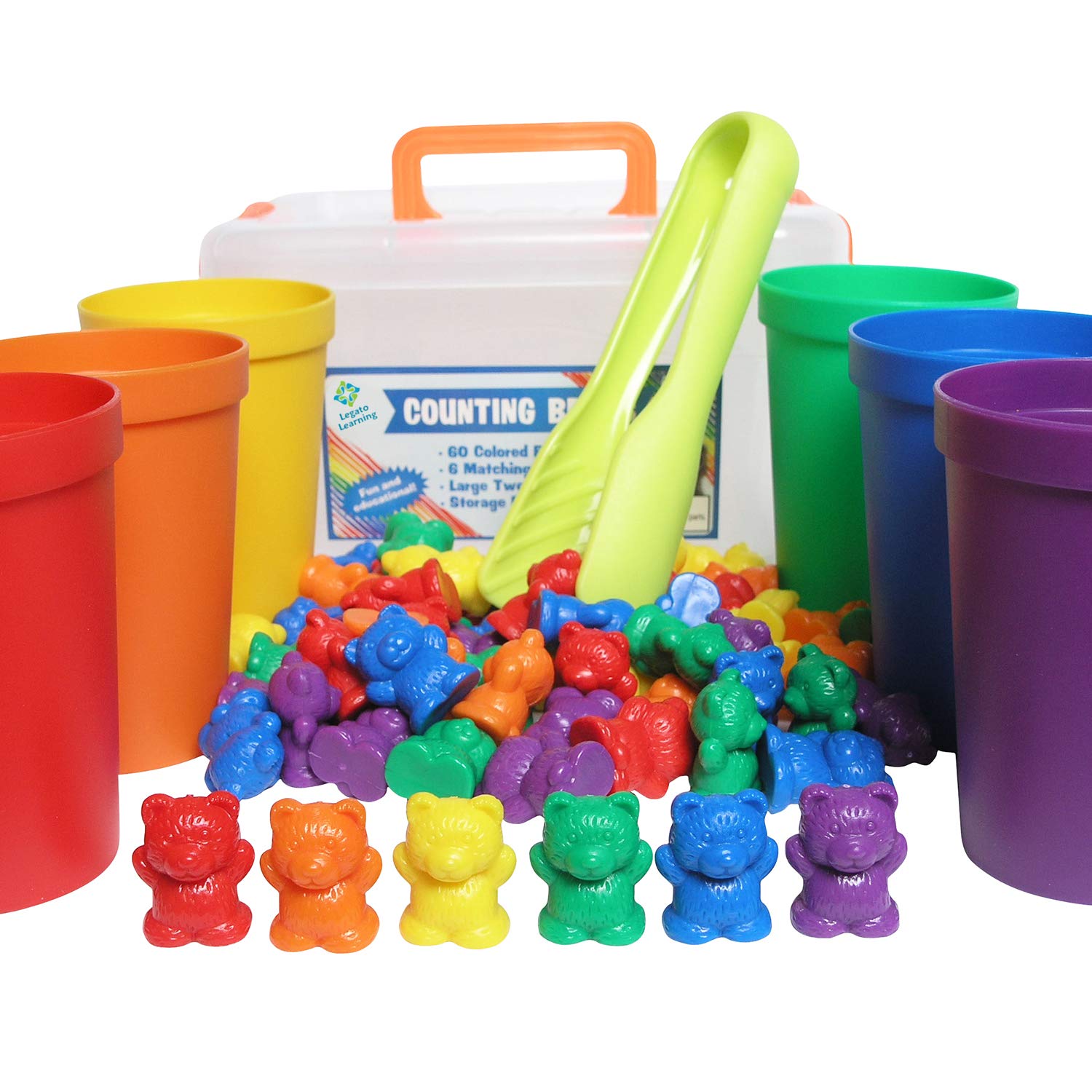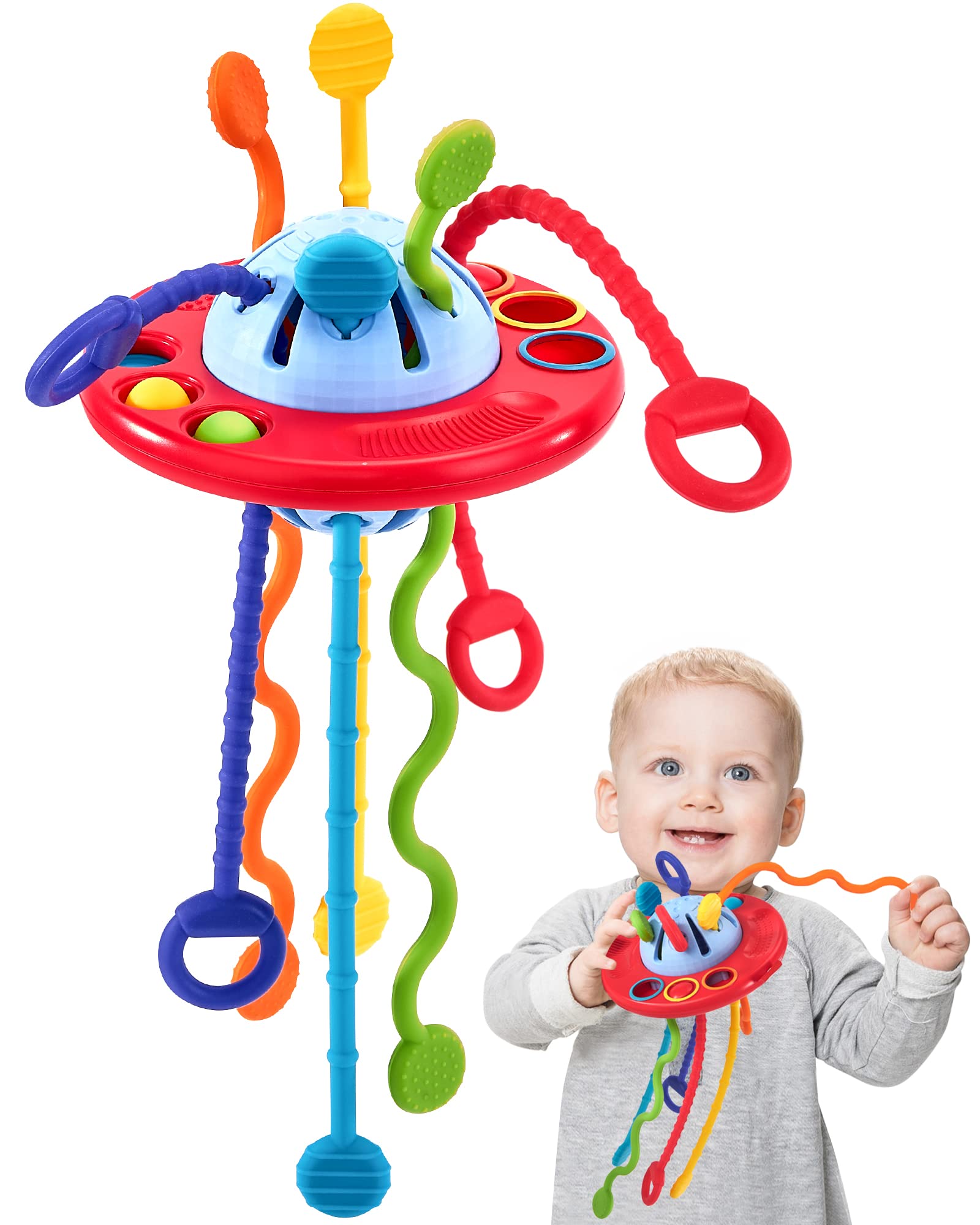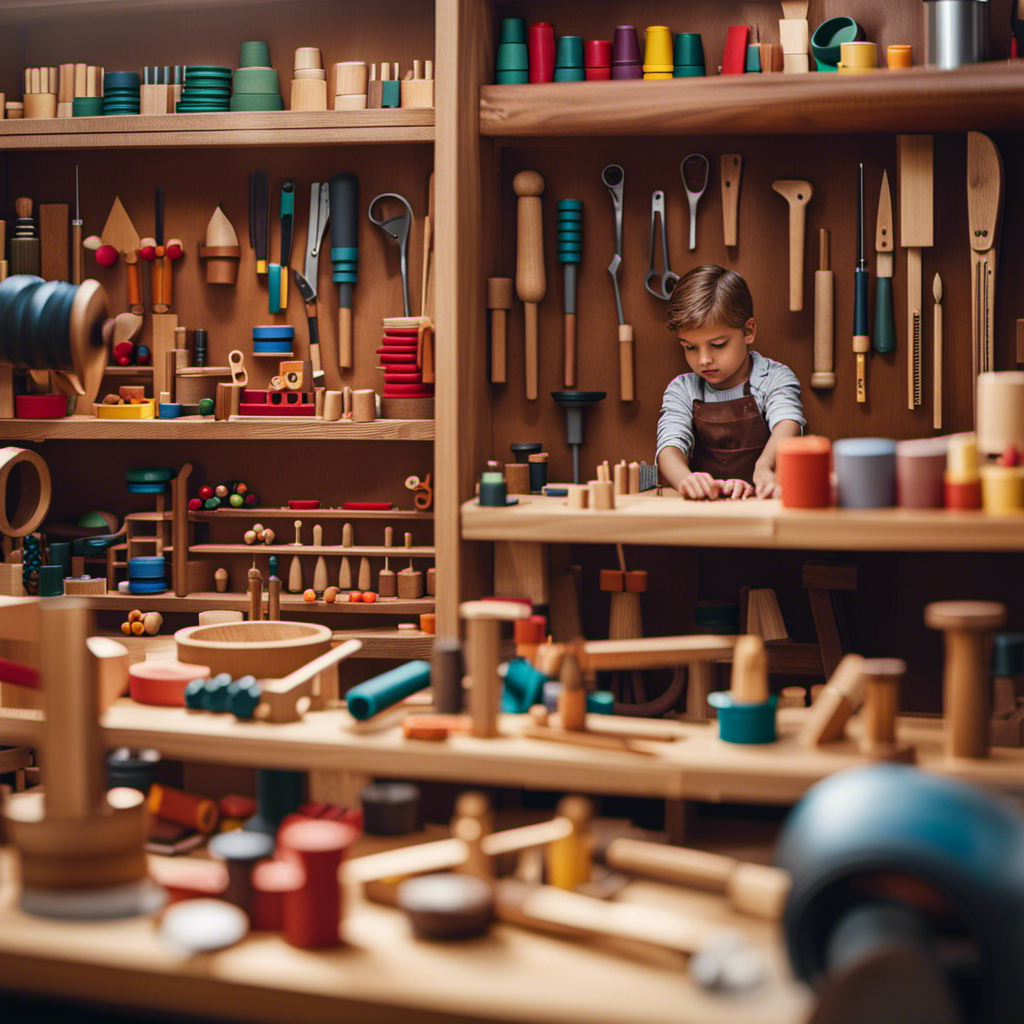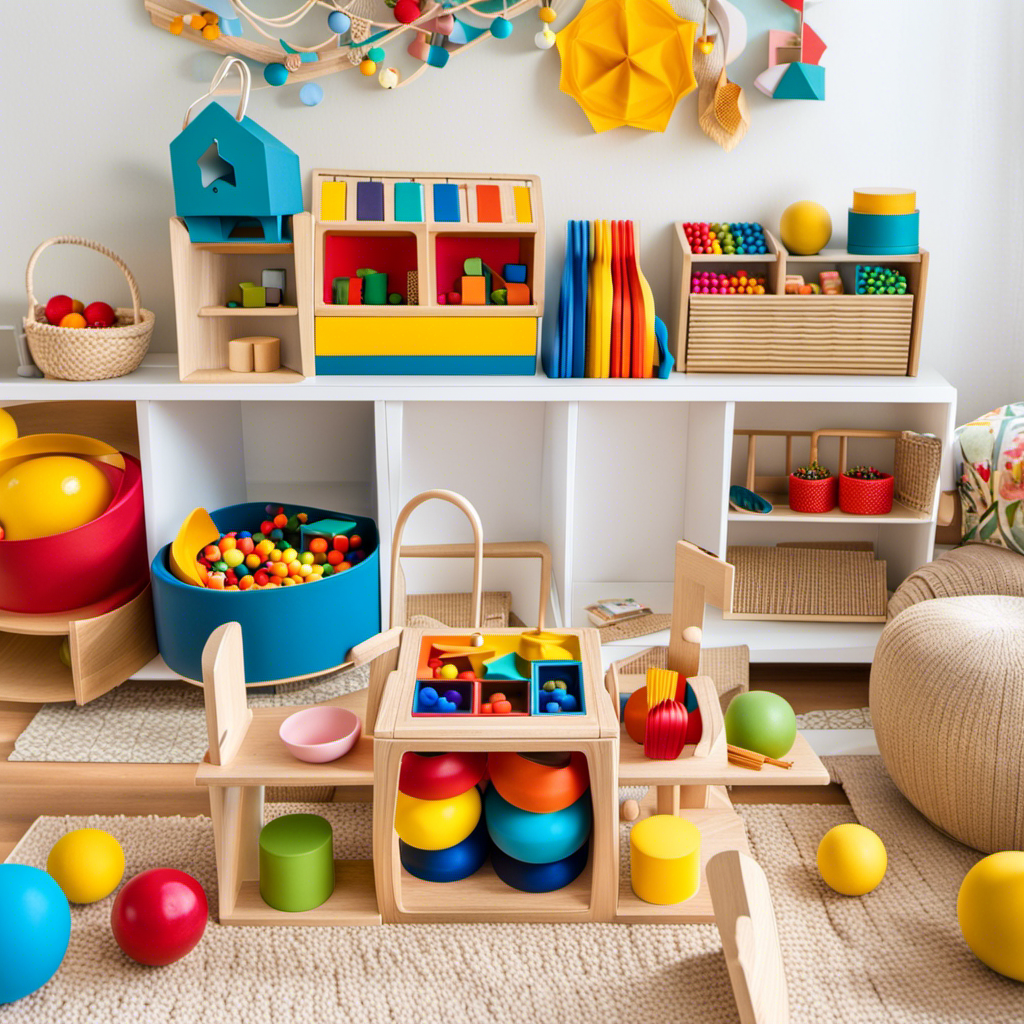Child Development
What Is SES in Child Development
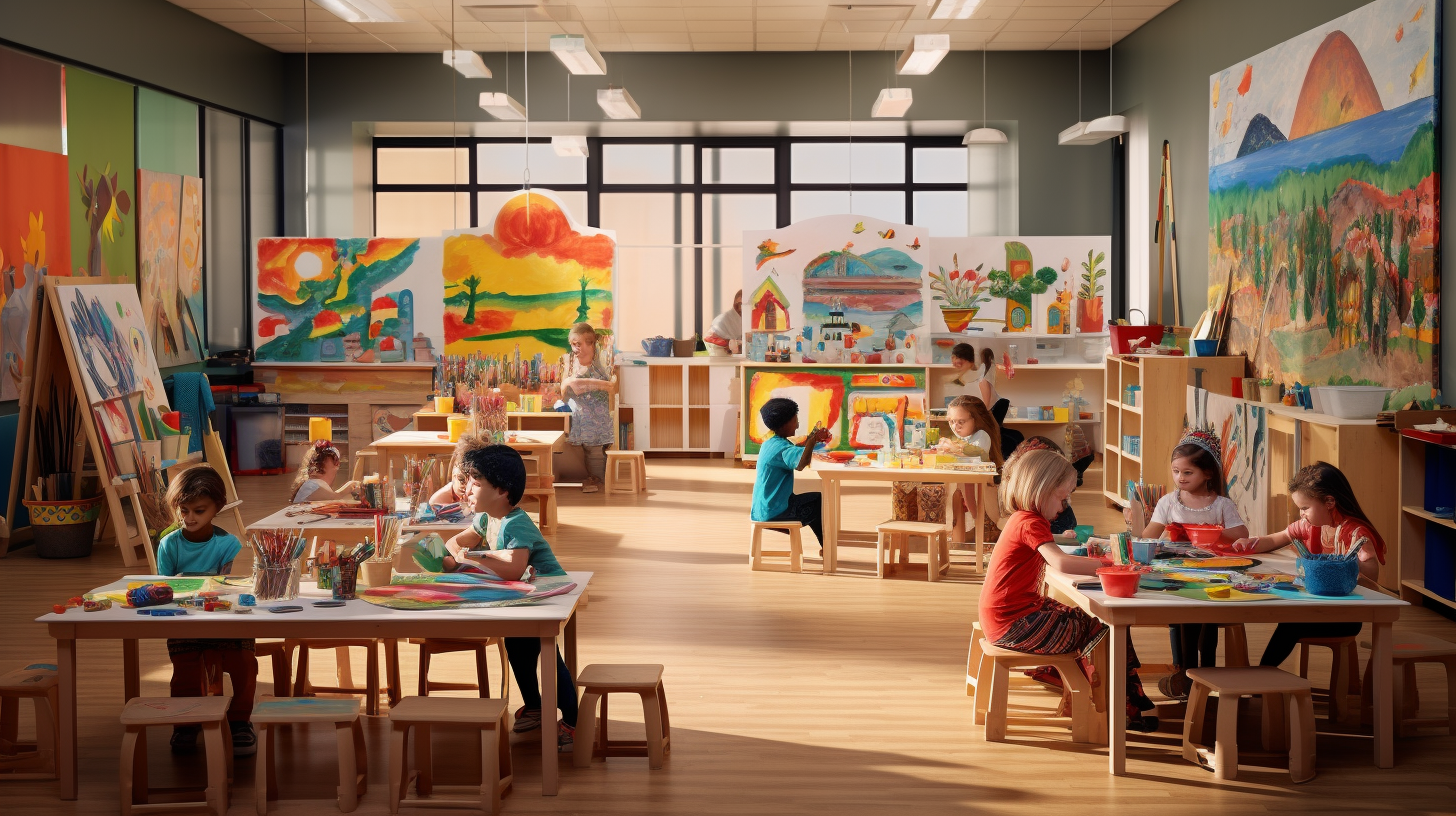
As I explore the intriguing world of child development, I often reflect on the importance of SES, or socioeconomic status. This complex idea plays a crucial role in influencing a child’s developmental path and overall health.
From access to resources to physical development, SES plays a pivotal role. In this article, we will explore the definition of SES, its effects on child development, and strategies to address the disparities that arise.
Join me on this enlightening journey as we uncover the intricate dance between SES and the flourishing of our young ones.
Key Takeaways
- SES, which stands for Socioeconomic Status, refers to an individual or family’s social and economic position in society, determined by factors such as income, education level, and occupation.
- Children from low SES backgrounds may have lower academic achievement, increased behavioral problems, and higher rates of mental health issues due to limited access to healthcare, nutritious food, and stimulating environments.
- SES has a significant impact on various aspects of a child’s development, including cognitive abilities, language skills, and social-emotional well-being, and can influence access to resources, opportunities, and support for children.
- Addressing socioeconomic disparities is crucial for creating an equitable society where all children have equal opportunities to thrive, as low SES can lead to barriers in accessing quality education, limited physical health outcomes, and hindered future success.
Definition of SES in Child Development
So, what’s the definition of SES in child development?
SES stands for Socioeconomic Status, which refers to an individual or family’s social and economic position in society. It is determined by factors such as income, education level, and occupation.
In child development, SES plays a crucial role in shaping a child’s experiences, opportunities, and overall well-being.
Research consistently shows that children from low SES backgrounds face numerous challenges in their development. The impact of poverty and social inequality can be profound, as these children often lack access to quality healthcare, nutritious food, and stimulating environments. They may also experience higher levels of stress, limited educational resources, and reduced social support networks.
These disparities in SES have far-reaching effects on children’s cognitive, social, and emotional development. Studies have shown that children from low SES backgrounds tend to have lower academic achievement, increased behavioral problems, and higher rates of mental health issues compared to their more advantaged peers.
Understanding the definition of SES in child development is crucial because it highlights the importance of addressing socioeconomic disparities and implementing targeted interventions to support children from low SES backgrounds. By recognizing the impact of poverty and social inequality, we can work towards creating a more equitable society where all children have equal opportunities to thrive and reach their full potential.
Importance of SES in Child Development
When it comes to child development, socioeconomic status (SES) plays a critical role. Research has consistently shown that SES has a significant impact on various aspects of a child’s development. This includes their cognitive abilities, language skills, and social-emotional well-being. Socioeconomic factors, such as parental education, income, and occupation, can shape a child’s access to resources, opportunities, and support. Ultimately, these factors influence their developmental outcomes.
Moreover, the long-term effects of SES can extend into adulthood. They can affect educational attainment, employment prospects, and overall life outcomes.
SES Impact on Development
development, another important aspect to consider is the impact of SES on educational attainment. 4) Children from lower SES backgrounds often face barriers to accessing quality education, such as limited resources, overcrowded classrooms, and a lack of educational support at home. These factors can contribute to lower academic achievement and hinder long-term educational and career opportunities. 5) Additionally, the influence of SES on physical health cannot be overlooked. Children from lower SES backgrounds are more likely to experience health disparities, including higher rates of chronic illnesses, inadequate nutrition, and limited access to healthcare services. 6) These health disparities can have long-lasting effects on a child’s overall well-being and development. 7) In conclusion, the impact of SES on child development is multifaceted, affecting areas such as mental health, educational attainment, and physical health. Government intervention and addressing the root causes of socioeconomic disparities are crucial in creating a more equitable society where all children have the opportunity to thrive.
Socioeconomic Factors and Child
To understand how socioeconomic factors impact children, you should consider their access to quality education and healthcare. Socioeconomic barriers, such as low income and limited resources, can create significant challenges for children’s overall well-being.
Research shows that children from lower socioeconomic backgrounds often face difficulties in accessing quality education, which can lead to lower academic achievement and limited future opportunities. Additionally, limited access to healthcare can result in poorer physical and mental health outcomes for these children.
Socioeconomic status plays a crucial role in shaping a child’s development and overall well-being. It is essential to address these socioeconomic barriers and provide equal opportunities for all children to ensure their optimal growth and development.
Understanding the long-term effects of SES can help us develop effective strategies to mitigate the negative impacts and promote positive outcomes for children.
Long-Term Effects of SES
If you don’t address the long-term effects of socioeconomic status (SES), you may overlook important factors that shape a person’s well-being. Research has shown that SES can have significant and lasting impacts on various aspects of an individual’s life, including physical and mental health, educational attainment, and career opportunities.
Individuals from lower SES backgrounds often face more challenges and barriers, leading to disparities in outcomes compared to those from higher SES backgrounds. To address these disparities, it is crucial to implement strategies that focus on improving access to quality education, healthcare, and employment opportunities for individuals from lower SES backgrounds. Additionally, providing support and resources for skill development, financial literacy, and social services can also help mitigate the long-term effects of SES.
Understanding and addressing these factors are essential to promoting equality and well-being for individuals across all socioeconomic backgrounds.
Moving forward to the next section about ‘factors influencing SES in child development,’ it is important to recognize the various factors that contribute to a child’s socioeconomic status and how they can shape their development and future outcomes.
Factors Influencing SES in Child Development
When examining the factors that influence socioeconomic status (SES) in child development, it is crucial to consider the impact of economic disparities and their effect on a child’s opportunities for development.
Economic disparities can significantly affect a child’s access to resources and support, ultimately shaping their overall development.
Additionally, the educational opportunities available to a child also play a crucial role in determining their SES and subsequent developmental outcomes.
Lastly, parental influence on SES is a critical factor to consider, as parents’ socioeconomic status can directly impact their children’s opportunities and access to resources.
Economic Disparities and Development
Economic disparities can impact the development of children. Research has shown that economic inequality has a significant effect on child well-being. Children growing up in low-income households often face numerous challenges that can hinder their overall development. The lack of access to basic necessities such as proper nutrition, healthcare, and quality education can have long-lasting consequences on their physical, cognitive, and social-emotional well-being.
Studies have found that children from economically disadvantaged backgrounds are more likely to experience developmental delays, perform poorly in school, and have limited opportunities for upward mobility in adulthood. The stressors associated with economic inequality, such as unstable housing, neighborhood violence, and parental financial strain, can also negatively impact children’s mental health and overall happiness.
Addressing economic disparities and promoting equal opportunities for all children is crucial for their development and future success. By providing support and resources to low-income families, we can help bridge the gap and ensure that every child has a fair chance to thrive.
Transitioning into the subsequent section about educational opportunities and SES, it is important to understand the interplay between socioeconomic status (SES) and education in child development.
Educational Opportunities and SES
Promoting equal access to education is crucial for addressing disparities in opportunities based on socioeconomic status. Educational opportunities play a significant role in determining a child’s future success and well-being.
Research has consistently shown that children from lower socioeconomic backgrounds face numerous obstacles in accessing quality education. These obstacles include limited resources, inadequate school facilities, and a lack of educational support at home. Socioeconomic factors such as income, parental education level, and neighborhood characteristics heavily influence a child’s educational opportunities.
It is essential to provide equal educational opportunities to all students, regardless of their socioeconomic background, to ensure a level playing field for success. By addressing these disparities, we can create a more equitable society where every child has a fair chance to reach their full potential.
Transitioning into the subsequent section, parental influence on SES is another critical aspect to consider in addressing educational disparities.
Parental Influence on SES
In the previous section, we discussed how educational opportunities are influenced by SES. Now, let’s shift our focus to the role of parental involvement in determining SES and its impact on child development.
Parental involvement plays a crucial role in shaping a child’s socioeconomic status. Research suggests that children whose parents are actively involved in their education and upbringing tend to have better academic outcomes and higher SES. This involvement can include activities such as helping with homework, attending parent-teacher meetings, and encouraging extracurricular activities.
However, income inequality presents a challenge to parental involvement. Families with low SES often face financial constraints, which can limit their ability to engage in activities that promote their child’s development. This further widens the gap between children from different socioeconomic backgrounds.
Now, let’s explore the effects of low SES on child development and how it impacts various aspects of their lives.
Effects of Low SES on Child Development
The effects of low SES on child development can be significant. Growing up in a socioeconomic disadvantage can have a lasting impact on a child’s cognitive, social, and emotional development. Here are four key effects of low SES on child development:
- Limited access to quality education: Low-income families often struggle to provide their children with opportunities for quality education. This can lead to lower academic achievement and hinder future success.
- Increased stress and adversity: Living in poverty can expose children to increased stress and adversity, which can negatively affect their emotional well-being and overall development.
- Limited access to healthcare: Families with low SES often face barriers to accessing healthcare services, leading to poorer physical health outcomes for their children.
- Reduced opportunities for enrichment: Due to financial constraints, children from low SES backgrounds may have limited access to extracurricular activities, cultural experiences, and other opportunities that can enhance their development.
Understanding the effects of low SES on child development highlights the importance of early intervention programs. These programs aim to provide support and resources to children and families in disadvantaged situations, mitigating the negative impact of low SES on development.
Transition: While low SES can have significant effects on child development, it is also important to explore the effects of high SES and how they shape children’s development.
Effects of High SES on Child Development
Having a high SES can provide you with numerous advantages that can positively impact your overall development. Research has shown that socioeconomic status (SES) plays a significant role in shaping a child’s cognitive development. Children from high SES backgrounds tend to have access to better educational resources, including quality schools, books, and educational materials. This exposure to a rich learning environment helps to improve their cognitive abilities and academic performance.
The effects of high socioeconomic status on child outcomes are far-reaching. Studies have found that children from high SES families tend to have higher IQ scores and perform better on standardized tests compared to their peers from lower SES backgrounds. Additionally, they are more likely to have better language and communication skills, problem-solving abilities, and overall academic achievement.
The role of SES in academic achievement is crucial. Children from high SES families often have access to private tutoring, enrichment programs, and extracurricular activities that further enhance their academic abilities. This exposure to a wide range of educational opportunities gives them an edge in the competitive academic landscape.
Role of SES in Academic Achievement
When it comes to academic achievement, socioeconomic status (SES) plays a significant role. Research has consistently shown that children from higher SES backgrounds tend to have better academic outcomes compared to their peers from lower SES backgrounds.
However, it is important to recognize that SES is just one of many factors influencing academic achievement. These factors include parental involvement, access to resources, and school quality.
These disparities in educational outcomes based on SES can contribute to the perpetuation of educational inequalities and the achievement gap.
SES and Academic Outcomes
Research shows that SES can significantly impact academic outcomes in children. The socioeconomic status of a child’s family has a direct influence on their educational attainment and overall academic performance. Here are four key effects of low SES on academic performance:
- Limited access to educational resources: Children from low SES backgrounds often lack access to quality schools, educational materials, and extracurricular activities, hindering their academic growth.
- Higher levels of stress and adversity: Low SES families may face economic hardships, neighborhood violence, and other stressors that can negatively impact a child’s ability to focus and succeed in school.
- Health disparities: Children from low SES backgrounds are more likely to experience health issues, such as chronic illnesses and malnutrition, which can impede their academic performance.
- Achievement gaps: Low SES students tend to perform lower on standardized tests and have lower graduation rates compared to their higher SES peers.
Understanding the effects of SES on academic outcomes is crucial in identifying strategies to support children from low SES backgrounds in achieving academic success.
Transitioning into the subsequent section about factors influencing academic achievement, it is important to consider various environmental and individual factors that can impact a child’s academic performance.
Factors Influencing Academic Achievement
One of the key factors that can influence academic achievement is the quality of the educational environment. Research has shown that factors such as parental involvement and community resources play a significant role in shaping a child’s educational outcomes.
When parents are actively involved in their child’s education, they can provide valuable support and encouragement, which has been linked to improved academic performance. Additionally, community resources, such as libraries, after-school programs, and tutoring services, can offer additional learning opportunities and support for students. These resources can help bridge the gap between home and school, providing students with the tools they need to succeed.
SES and Educational Disparities
To understand the relationship between socioeconomic status (SES) and educational disparities, you must consider the influence of factors like parental involvement and community resources.
Research shows that children from lower SES backgrounds tend to have lower educational attainment compared to their peers from higher SES backgrounds. This can be attributed to income inequality and the limited access to quality educational resources and opportunities. Income inequality creates barriers for families with lower SES to provide their children with the necessary support and resources to succeed academically. Additionally, lower SES households often face challenges such as limited access to affordable housing, healthcare, and nutritious food, which can further impact a child’s ability to thrive in an educational setting.
Understanding the influence of SES on educational disparities is crucial in addressing the systemic barriers that prevent equal educational opportunities for all children.
As we explore the impact of SES on social-emotional development, it is important to recognize that educational disparities are just one aspect of this larger issue.
Impact of SES on Social-Emotional Development
You’ll notice how SES can significantly affect your child’s social-emotional development. The impact of poverty, which is often linked to lower SES, can have detrimental effects on a child’s well-being. Research has consistently shown that children growing up in poverty are more likely to experience higher levels of stress, anxiety, and depression. These challenges can arise from living in disadvantaged neighborhoods, limited access to resources and opportunities, and increased exposure to violence and trauma.
Furthermore, the influence of family in shaping a child’s social-emotional development cannot be overstated. Families from low SES backgrounds may face multiple stressors such as financial instability, inadequate healthcare, and limited educational support. These stressors can compromise the quality of parent-child interactions, leading to less responsive and nurturing caregiving. It is important to note that these findings do not imply that all families from low SES backgrounds exhibit these challenges, as there is significant variability within and across socioeconomic groups.
Moving forward, let’s explore the connection between SES and language development in children.
SES and Language Development in Children
The connection between socioeconomic status (SES) and language development in children is a topic that has been extensively researched. Studies have consistently shown that socioeconomic status has a significant impact on vocabulary development and overall language skills in children. Children from higher SES backgrounds tend to have larger vocabularies and stronger language skills compared to those from lower SES backgrounds.
The impact of socioeconomic status on language skills can be attributed to various factors. First and foremost, children from higher SES families often have access to a more enriched linguistic environment. They are exposed to a wider range of words, have more opportunities for language stimulation, and engage in more frequent and complex conversations with their parents or caregivers. This exposure to rich language input from an early age helps in building a strong foundation for language development.
Additionally, higher SES families typically have greater access to educational resources such as books, educational toys, and technology that promote language development. They also have more opportunities for quality early childhood education and enrichment activities, which further enhance language skills.
In contrast, children from lower SES backgrounds often experience limited language exposure and less access to educational resources. This can result in a smaller vocabulary size and weaker language skills, which can have long-term consequences on academic achievement and social communication.
In conclusion, socioeconomic status plays a crucial role in vocabulary development and language skills in children. Understanding this impact can help educators and policymakers design interventions and programs that aim to reduce the language gap between children from different socioeconomic backgrounds.
The connection between SES and language development in children provides a foundation for exploring the impact of SES on cognitive development in children.
SES and Cognitive Development in Children
Your child’s cognitive development is influenced by their socioeconomic status. Research has shown that socioeconomic status (SES) plays a significant role in shaping a child’s intelligence and behavior. Here are some key ways in which SES can impact cognitive development:
- Access to resources: Children from higher SES backgrounds tend to have access to better educational opportunities, including quality schools, books, and educational toys. This exposure to stimulating environments can enhance their cognitive abilities.
- Parental involvement: Higher SES families often have more resources and time to invest in their children’s education. They can provide intellectual stimulation, engage in educational activities, and offer support for their child’s learning, which contributes to cognitive development.
- Stress and mental health: Lower SES families may face higher levels of chronic stress, which can negatively impact cognitive development. Stressors like financial strain and unstable living conditions can affect a child’s ability to concentrate, learn, and problem-solve.
Understanding the influence of SES on cognitive development can help parents and educators provide targeted support to children from lower SES backgrounds, ensuring they have equal opportunities to develop their cognitive abilities.
As we transition to the subsequent section about SES and physical development in children, it is crucial to consider how these factors interact and influence each other in shaping a child’s overall development.
SES and Physical Development in Children
As I explore the impact of socioeconomic status (SES) on physical development in children, I consider how access to resources and parental involvement can play a crucial role.
Research has shown that socioeconomic status has a significant influence on motor skills and physical growth in children. Children from higher SES backgrounds tend to have better motor skills, coordination, and physical fitness compared to their peers from lower SES backgrounds.
One reason for this disparity is the access to resources. Children from higher SES families often have access to better nutrition, healthcare, and recreational facilities. These resources contribute to their overall physical development. In contrast, children from lower SES families may face barriers to accessing these resources, which can hinder their physical growth and development.
Additionally, parental involvement plays a vital role in promoting physical development. Parents from higher SES backgrounds are more likely to engage in activities that promote physical activity and motor skill development, such as enrolling their children in sports or providing them with opportunities for active play. On the other hand, parents from lower SES backgrounds may have limited time and resources to engage in such activities, which can impact their children’s physical development.
In the subsequent section about SES and access to resources for child development, we will further explore how socioeconomic status influences the availability and utilization of resources that are critical for a child’s overall development.
SES and Access to Resources for Child Development
Access to resources for child development varies based on socioeconomic status, with higher SES families often having more opportunities for their children’s growth and well-being. Socioeconomic factors play a significant role in determining the quality and quantity of resources available to children. Research has consistently shown that children from low-income families have limited access to resources such as high-quality education, healthcare, and enrichment activities. This disparity in access can have long-lasting effects on a child’s development and future success.
To emphasize the impact of socioeconomic factors on access to resources, consider the following table:
| Resource Type | High SES Families | Low SES Families |
|---|---|---|
| Education | Access to top-tier schools and private tutors | Limited access to quality education |
| Healthcare | Comprehensive health insurance coverage | Limited access to healthcare services |
| Enrichment Activities | Participation in extracurricular activities and cultural events | Limited exposure to enrichment opportunities |
As the table demonstrates, children from higher SES families are more likely to have access to a wide range of resources that support their development. On the other hand, children from low SES families often face barriers in accessing these resources, which can hinder their overall growth and well-being.
In the subsequent section, we will discuss strategies to address SES disparities in child development, aiming to bridge the gap and provide equal opportunities for all children to thrive.
Strategies to Address SES Disparities in Child Development
In my previous discussion, I explored how socioeconomic status (SES) affects access to resources for child development. Now, let’s delve into strategies that can be implemented to address the disparities in child development outcomes based on SES.
One effective strategy is to provide high-quality early childhood education programs. Research has consistently shown that children from low SES backgrounds benefit greatly from early intervention programs that focus on cognitive, social, and emotional development. These programs can help level the playing field and provide children with the necessary skills to succeed in school and beyond.
Another strategy is to improve access to healthcare and nutrition for children from low SES backgrounds. Ensuring that all children have access to regular medical check-ups, immunizations, and nutritious meals can significantly improve their overall health and well-being, which in turn can positively impact their development.
Additionally, it is crucial to implement policies that address income inequality and provide support to families living in poverty. These policies may include increasing the minimum wage, expanding access to affordable housing, and providing financial assistance to low-income families.
By implementing these strategies, we can begin to bridge the gap in child development outcomes based on SES. However, there is still much work to be done.
In the next section, we will explore future research directions on SES and child development, focusing on understanding the underlying mechanisms and exploring innovative interventions.
Future Research Directions on SES and Child Development
To gain a deeper understanding of the impact of socioeconomic status (SES) on children’s growth, we can explore innovative interventions and study the underlying mechanisms.
By focusing on future research directions and research opportunities, we can continue to expand our knowledge and develop effective strategies to address SES disparities in child development.
- Longitudinal Studies: Conducting long-term studies that follow children from different SES backgrounds can provide valuable insights into the long-term effects of SES on child development. By examining various aspects such as cognitive, social, and emotional development, we can better understand the specific pathways through which SES influences children’s outcomes.
- Intervention Programs: Designing and implementing intervention programs that specifically target children from low SES backgrounds can help mitigate the negative effects of socioeconomic disadvantage. Examining the effectiveness of these programs and identifying the key components that lead to positive outcomes can guide future interventions and policies.
- Mechanisms of Influence: Investigating the underlying mechanisms through which SES impacts child development can provide crucial information for intervention design. Exploring factors such as parenting styles, access to resources, and exposure to stressors can help identify potential points of intervention and inform policies aimed at reducing SES disparities.
Frequently Asked Questions
What Are the Long-Term Effects of Low SES on Cognitive Development in Children?
The long-term impact of low SES on cognitive development in children is significant. Research has shown that children from low SES backgrounds tend to have lower cognitive abilities compared to their peers from higher SES backgrounds.
This can affect their academic performance, problem-solving skills, and overall cognitive functioning. It is crucial to address this issue and provide support and resources to children from low SES backgrounds to help mitigate these effects and promote their cognitive development.
How Does SES Impact a Child’s Social-Emotional Development?
When it comes to a child’s social-emotional development, SES can have a significant impact. For example, children from low SES backgrounds may struggle with behavior issues and have difficulty developing strong relationship skills.
Research shows that the stressors associated with low SES, such as poverty and limited access to resources, can affect a child’s ability to regulate their emotions and interact effectively with others.
Understanding this impact can help us provide targeted support and interventions to promote healthy social-emotional development in all children.
What Resources Are Typically Lacking for Children From Low SES Backgrounds?
When it comes to children from low SES backgrounds, there is often a lack of support and educational opportunities. These kids may not have access to the same resources as their peers from higher SES backgrounds. They may not have access to quality schools, extracurricular activities, or tutors.
This lack of support and educational opportunities can hinder their overall development and impact their future success. It is important that we address these disparities and provide equal opportunities for all children, regardless of their SES.
Are There Any Strategies That Have Been Successful in Addressing SES Disparities in Child Development?
There are strategies for reducing SES disparities in child development and effective interventions for low SES children.
Research has shown that high-quality early childhood education programs can have a significant positive impact on children from low SES backgrounds. These programs provide a supportive and stimulating environment that helps children develop important cognitive, social, and emotional skills.
Additionally, targeted interventions that address specific needs such as language development or parental involvement have also been successful in improving outcomes for low SES children.
What Are Some Areas of Future Research on SES and Child Development?
When it comes to the future of research on SES and child development, there are several areas of study that hold great promise.
Understanding the impact of SES on various aspects of child development, such as cognitive abilities and socioemotional well-being, is crucial.
However, there are also methodological challenges that need to be addressed, such as accurately measuring SES and controlling for confounding variables.
Conclusion
In conclusion, understanding the role of SES in child development is crucial for creating effective strategies to promote positive outcomes for all children.
While some may argue that SES disparities are inevitable and cannot be overcome, research has shown that targeted interventions and support can make a significant difference in the lives of children from low SES backgrounds.
By providing access to resources, addressing inequalities, and fostering a supportive environment, we can help children thrive regardless of their socioeconomic status.
It is imperative that we continue to invest in research and implement evidence-based practices to ensure the well-being and success of all children.
Mila, a gifted writer with a heart brimming with enthusiasm for child development and playful learning, is the creative force behind the enchanting narratives and insightful articles that grace Toddler Ride On Toys. With a background in early childhood education and a genuine passion for nurturing young minds, Mila weaves words that captivate, educate, and inspire parents, caregivers, and educators.
Child Development
Why Is Art Important for Child Development

As a strong advocate for the growth and development of children, I firmly believe that art is essential in nurturing the intelligence and creativity of young individuals.
Art has the power to ignite curiosity, stimulate imagination, and foster emotional intelligence.
Through the act of creation, children enhance their cognitive skills, develop their self-expression, and explore diverse cultures.
Moreover, art provides a therapeutic outlet for their mental well-being, boosts their confidence, and encourages critical thinking.
In this article, we will explore the myriad of reasons why art is vital for the holistic development of children.
Key Takeaways
- Art promotes interaction, collaboration, teamwork, communication, and cooperation among children.
- Engaging in art activities helps children express themselves in non-verbal ways and enhances their ability to perceive and interpret the world.
- Art encourages creative thinking, problem-solving, and the ability to analyze and interpret visual information, improving cognitive skills.
- Art evokes emotions, promotes self-reflection, fosters empathy skills, and provides a safe space for emotional exploration and healing.
The Benefits of Art in Child Development
Art helps you develop important skills such as creativity, problem-solving, and self-expression. But its impact on child development goes beyond these individual skills.
Art also plays a crucial role in enhancing social skills and sensory development.
Engaging in art activities provides children with opportunities to interact and collaborate with their peers. Whether it’s working together on a mural or participating in a drama production, art fosters teamwork, communication, and cooperation. Through these collaborative experiences, children learn how to share ideas, compromise, and respect others’ perspectives. These social skills are essential for building relationships and navigating the complexities of the social world.
Additionally, art stimulates sensory development in children. When children engage in activities like painting, sculpture, or dance, they explore different textures, colors, and movements. This sensory exploration helps them develop their senses and enhances their ability to perceive and interpret the world around them. By engaging their senses, children also learn to express themselves in non-verbal ways, which is especially beneficial for those who may struggle with verbal communication.
As we can see, art has a profound impact on social skills and sensory development in children. However, its benefits don’t stop there. Art also plays a significant role in enhancing cognitive skills, as we will explore in the next section.
Enhancing Cognitive Skills Through Art
When you engage in creative activities like drawing or painting, you’re not just having fun, you’re also sharpening your thinking skills. Art is an incredible tool for developing problem-solving skills and improving cognitive development in children.
Here are five ways art can enhance cognitive skills:
-
Creativity: Art encourages children to think outside the box and come up with unique solutions to artistic challenges.
-
Critical Thinking: Through art, children learn to analyze, interpret, and make decisions based on visual information.
-
Attention to Detail: Creating art requires focus and attention to detail, which helps children develop their observation skills.
-
Spatial Awareness: Art helps children understand how objects relate to one another in space, improving their spatial reasoning abilities.
-
Memory Enhancement: Engaging in art activities, such as memorizing colors or shapes, can help improve a child’s memory skills.
By participating in art, children develop problem-solving skills and enhance their cognitive development.
This lays a strong foundation for the subsequent section on developing emotional intelligence through art, as art serves as a powerful tool to foster emotional growth and understanding.
Developing Emotional Intelligence Through Art
To foster emotional growth and understanding, you can explore how engaging in creative activities like drawing or painting can help you develop your emotional intelligence. Art has the power to evoke emotions and allow us to express ourselves in ways that words alone cannot. When we engage in artistic endeavors, we are encouraged to tap into our emotions, examine our feelings, and communicate them visually. This process of self-reflection and expression is essential for developing empathy skills and fostering self-awareness.
Through art, we can learn to identify and understand our own emotions, as well as recognize and empathize with the emotions of others. By exploring different art forms and styles, we can gain insight into the diverse range of human experiences and perspectives. This not only enhances our ability to relate to others but also helps us develop a deeper understanding of ourselves.
Art provides a safe and non-judgmental space for us to explore complex emotions, gain clarity, and find healing. Whether it’s through painting, drawing, sculpting, or any other form of artistic expression, we can channel our emotions and create something meaningful. Art allows us to communicate our innermost thoughts and feelings, even when words fail us.
Transition: As we delve deeper into the significance of art in child development, it becomes evident that art serves as a powerful tool for self-expression and communication.
Art as a Tool for Self-expression and Communication
Expressing yourself through creative activities like drawing or painting can help you develop a deeper understanding of your emotions and enhance your ability to communicate with others. Art has always been a powerful tool for self-discovery and emotional expression. It allows us to explore our innermost thoughts and feelings, giving form to the intangible and making the invisible visible.
Through art, we can delve into the depths of our psyche and uncover hidden aspects of ourselves. It provides a safe space for self-reflection and introspection, enabling us to discover new insights and perspectives. Whether it’s through abstract shapes and colors or realistic representations, art allows us to externalize our emotions and experiences, giving them tangible form.
To illustrate the power of art in emotional expression, imagine the following scenario:
| Emotion | Artwork | Description |
|---|---|---|
| Joy | A vibrant, colorful | A painting bursting with bright hues and |
| landscape | playful brushstrokes, depicting a | |
| sunlit meadow filled with flowers and | ||
| butterflies. | ||
| Sadness | A dark, melancholic | A charcoal drawing of a solitary figure |
| portrait | hunched over, with tears streaming down | |
| their face. | ||
| Anger | A bold, dynamic | An abstract painting with bold, |
| composition | aggressive brushstrokes and fiery hues, | |
| representing the intensity of anger. |
Art allows us to communicate our emotions to others in a way that words often cannot. It transcends language barriers and allows for a deeper connection and understanding between individuals. By sharing our artwork, we invite others to step into our world and experience our emotions alongside us.
Transitioning into the subsequent section about fostering creativity and imagination in children, it is crucial to recognize the impact of art in their development. Art provides children with a means to express themselves, explore their emotions, and develop their communication skills from an early age.
Fostering Creativity and Imagination in Children
If you encourage creativity and imagination in children, they will have a greater ability to think outside the box and come up with innovative solutions. Nurturing artistic abilities and encouraging self-expression are key in fostering creativity and imagination in children. Here are a few reasons why it is important to do so:
-
Enhanced Problem-Solving Skills: When children are allowed to explore their creativity, they develop critical thinking skills and learn to approach problems from different angles. This enables them to come up with unique and innovative solutions.
-
Improved Communication Skills: Artistic activities provide a platform for children to express themselves freely. This helps them develop effective communication skills, allowing them to express their thoughts and emotions in a creative and meaningful way.
-
Boosted Self-Confidence: When children engage in creative activities and see their ideas come to life, it boosts their self-esteem and confidence. They learn to trust their abilities and become more willing to take risks and explore new ideas.
-
Cultivated Imagination: Artistic pursuits encourage children to use their imagination and think beyond the boundaries of reality. This fosters creativity and helps them develop the ability to envision new possibilities.
Building Fine Motor Skills Through Art Activities
When it comes to building fine motor skills, art activities are a fantastic way to enhance hand-eye coordination and improve finger dexterity.
Engaging in activities such as drawing, painting, and sculpting not only allows children to explore their creativity and imagination, but also strengthens the muscles in their hands and fingers.
As they manipulate different art materials and experiment with various techniques, they are developing essential skills that will benefit them in various areas of their lives.
Enhancing Hand-Eye Coordination
Art can help children improve their hand-eye coordination through activities like drawing, painting, and sculpting. These creative endeavors require precise movements and coordination between the hands and the eyes. By practicing these art forms, children can enhance their ability to control their hand movements and accurately manipulate art tools.
This improvement in hand-eye coordination not only benefits their artistic skills but also has a positive impact on their overall development. Art activities also play a crucial role in improving spatial awareness and enhancing visual perception. Through observing, analyzing, and replicating shapes, colors, and proportions, children develop a better understanding of spatial relationships and how objects interact in a given space.
This knowledge extends beyond the art realm and can greatly benefit their academic and everyday life. Moreover, mastering hand-eye coordination through art lays a solid foundation for improving finger dexterity, which we will explore further in the subsequent section.
Improving Finger Dexterity
To improve your finger dexterity, try incorporating activities that involve fine motor skills, such as playing musical instruments or engaging in intricate crafts.
These activities not only enhance manual dexterity but also improve hand strength. When we engage in these activities, our fingers are constantly moving and working, strengthening the muscles in our hands.
Playing a musical instrument, for example, requires precise finger movements and coordination, which can greatly improve finger dexterity over time. Similarly, engaging in intricate crafts like knitting or origami can help improve finger strength and control.
Boosting Creativity and Imagination
As we saw in the previous section, improving finger dexterity through art is crucial for a child’s development. It lays the foundation for their artistic abilities and fine motor skills.
But art does not stop there; it also plays a significant role in boosting creativity and imagination. Nurturing artistic expression allows children to explore their thoughts and emotions freely. It encourages them to think outside the box and find innovative solutions to problems.
By engaging in artistic activities such as drawing, painting, or sculpting, children learn to express themselves in unique ways and develop their own artistic style. These experiences spark innovation and help children develop a creative mindset that can be applied to various aspects of their lives.
Now, let’s delve into how art promotes critical thinking and problem-solving.
Promoting Critical Thinking and Problem-Solving Through Art
Encouraging your child to engage in artistic activities fosters critical thinking and problem-solving skills. Art provides a unique platform for children to explore and express their ideas, allowing them to develop valuable cognitive abilities that will benefit them throughout their lives.
Here are four ways in which art promotes critical thinking and problem-solving:
-
Encourages creative problem-solving: When children engage in art, they learn to think outside the box and find innovative solutions to challenges. Whether it’s figuring out how to blend colors or finding alternative materials for a project, art fosters a mindset that embraces experimentation and problem-solving.
-
Enhances decision-making skills: Artistic activities require children to make choices, such as selecting colors, materials, or composition. These decisions help them develop the ability to weigh options, consider consequences, and make informed choices, all of which are crucial aspects of critical thinking.
-
Stimulates analytical thinking: Art often involves analyzing, observing, and interpreting visual information. Whether it’s studying the work of famous artists or analyzing their own creations, children learn to observe details, identify patterns, and make connections, strengthening their analytical thinking skills.
-
Fosters perseverance and resilience: Artistic endeavors can be challenging, requiring patience and persistence. Children learn to tackle obstacles, embrace mistakes as learning opportunities, and find creative solutions to overcome difficulties. This resilience and perseverance are essential skills in problem-solving.
By engaging in artistic activities, children develop critical thinking and problem-solving skills that will serve them well in all areas of life.
Now, let’s explore how art also serves as a means of cultural exploration and appreciation.
Art as a Means of Cultural Exploration and Appreciation
Engaging in artistic activities allows children to explore and appreciate different cultures, fostering a sense of cultural diversity and artistic exploration. Through art, children are given the opportunity to learn about various traditions, customs, and beliefs from around the world. By creating artwork inspired by different cultures, they can gain a deeper understanding and appreciation for the beauty and uniqueness of each one.
Artistic exploration provides a platform for children to express their thoughts, emotions, and experiences in a creative and visually appealing way. It allows them to delve into their imagination and experiment with different techniques and mediums, which can further enhance their understanding of cultural diversity. This exposure to various art forms from different cultures not only expands their artistic skills but also broadens their perspective on the world.
Moreover, engaging in art allows children to connect with different historical and contemporary artists who have contributed to the rich tapestry of global art. By studying and emulating the works of artists from diverse backgrounds, children can develop a greater sense of empathy and cultural appreciation.
Transition: In addition to exploring different cultures, art also plays a crucial role in boosting confidence and self-esteem.
Boosting Confidence and Self-Esteem Through Art
Boosting confidence and self-esteem through art allows individuals to express their unique perspectives and talents, fostering a sense of self-worth and personal growth. Art provides a powerful platform for self-expression, enabling individuals to communicate their thoughts, emotions, and experiences in ways that words alone cannot. Whether it’s painting, drawing, sculpture, or any other form of artistic expression, the act of creating art empowers individuals to embrace their creativity, take risks, and celebrate their accomplishments.
Engaging in artistic pursuits can have a profound impact on one’s self-confidence. By discovering their strengths and abilities, individuals gain a newfound belief in their own capabilities. As they develop their artistic skills, they begin to see tangible evidence of their progress, which further boosts their self-esteem. Art also encourages individuals to step outside their comfort zones and embrace vulnerability. When they share their artwork with others, they receive feedback and validation, reinforcing their sense of self-worth.
Furthermore, building self-esteem through art is not limited to the final product. The process of creating art is equally important. It allows individuals to explore their thoughts and emotions, providing a safe space for self-reflection and self-discovery. Through art, individuals can confront challenges, express their deepest fears, and overcome personal obstacles. This transformative journey enhances their self-esteem and empowers them to navigate life’s challenges with resilience and confidence.
Transition: Art not only boosts confidence and self-esteem but also serves as a therapeutic outlet for children’s mental well-being.
Art as a Therapeutic Outlet for Children’s Mental Well-being
Additionally, using art as a therapeutic outlet can provide children with a safe space to express and process their emotions. Art therapy for children has been proven to have numerous benefits in promoting their mental well-being and emotional development.
Through creative expression in therapy, children are able to communicate their thoughts and feelings in a non-verbal way. This can be especially beneficial for those who struggle with verbal communication or have difficulty expressing their emotions. Art allows children to externalize their internal experiences and gain a better understanding of their emotions.
Incorporating a variety of art materials and techniques, art therapy provides a unique and engaging way for children to explore and manage their emotions. It encourages self-reflection and self-expression, helping children to develop a sense of identity and self-awareness.
The benefits of art therapy for children extend beyond emotional expression. It can also help improve problem-solving skills, enhance self-esteem, and foster creativity. When children engage in art therapy, they are encouraged to think outside of the box, explore different perspectives, and find innovative solutions to challenges.
Art therapy for children is a powerful tool for promoting mental well-being and emotional growth. It offers a safe and supportive environment where children can freely express themselves and process their emotions. By incorporating art into therapy sessions, we can help children develop valuable coping skills and improve their overall mental health.
Frequently Asked Questions
How Does Art Contribute to a Child’s Social Development?
Artistic expression plays a crucial role in a child’s social development. Through art, children learn to communicate their thoughts, emotions, and experiences in a creative and meaningful way. This helps them develop emotional intelligence, as they learn to understand and express their feelings.
Additionally, art therapy can be used to enhance social skills development, as it provides a safe and supportive environment for children to interact, collaborate, and problem-solve together.
Overall, art fosters social connections, empathy, and self-awareness in children.
Can Art Help Children With Learning Disabilities?
Art has the power to unlock hidden potential in children with learning disabilities. Through art therapy, these kids can express themselves in ways they struggle to do verbally or academically.
Creating art allows them to explore their emotions, improve their motor skills, and boost their self-esteem. It’s truly incredible to witness the transformative effects that art can have on their lives.
The benefits of art for children with learning disabilities are immeasurable.
What Types of Art Activities Are Most Beneficial for Child Development?
When it comes to child development, sensory exploration and storytelling through art activities are incredibly beneficial.
By engaging in sensory exploration, children can enhance their cognitive and motor skills, as well as develop their creativity and imagination.
Through storytelling, they learn to express themselves and communicate their thoughts and emotions.
These art activities provide a platform for self-expression, problem-solving, and building confidence.
They also foster a love for learning and help children develop important social and emotional skills.
At What Age Should Children Start Engaging in Art Activities?
Starting art activities in early childhood is crucial for the holistic development of children. Engaging in art at a young age allows them to explore their creativity and imagination, fostering cognitive, emotional, and social skills.
It is during this period that their brains are most receptive to learning and development. Art activities provide numerous benefits, such as enhancing fine motor skills, promoting self-expression, and boosting problem-solving abilities.
Therefore, introducing art to children at an early age is essential for their overall growth and development.
How Can Parents Encourage and Support Their Child’s Artistic Development at Home?
To encourage and support my child’s artistic development at home, I provide them with a variety of art supplies to explore their creativity. I believe that creative exploration is crucial for their growth and development.
I encourage them to experiment with different mediums and techniques, and I always make sure to praise their efforts and creations. By creating a supportive and nurturing environment, I hope to foster their love for art and help them develop their artistic skills.
Conclusion
In conclusion, it’s clear that art is absolutely vital for the development of children. Who needs math or science when you can have a beautifully painted masterpiece, right?
Art not only enhances cognitive skills and emotional intelligence, but it also serves as a means of self-expression and communication. Plus, it fosters creativity and imagination, promotes critical thinking, and exposes children to different cultures.
Let’s not forget the boost in confidence and self-esteem that comes from creating something amazing. So, let’s all grab some paintbrushes and unleash our inner Picassos!
Avery brings the magic of words to life at Toddler Ride On Toys. As a dedicated writer, she combines her love for writing with her fascination for child development to craft articles that resonate with our audience. With a background in journalism and a knack for storytelling, Avery’s pieces inform, engage, and inspire parents and caregivers.
Child Development
Unlocking Early Child Development: The Key to Lifelong Success

As a parent, I have witnessed the incredible growth and advancements that occur during a child’s early years. It is truly remarkable to see how these early experiences shape their future accomplishments.
Unlocking early child development is the key to lifelong achievement, as it sets the foundation for crucial skills and abilities. From language acquisition to motor skills, providing nurturing and stimulating environments during these critical years is paramount.
In this article, we will explore the importance of early brain development, the impact of nurturing environments, and strategies to address developmental needs.
Let’s embark on this journey of unlocking the potential of our children for lifelong success.
Key Takeaways
- Brain development and skill acquisition are most rapid in the first five years of a child’s life, making this period crucial for early child development.
- Early experiences shape the brain’s structure for life, highlighting the importance of nurturing and stimulating environments during the early years.
- Insufficient developmental needs can have profound and long-lasting impacts, emphasizing the need for early identification of delays and timely interventions.
- Understanding standard milestones guides parents in providing the best support, allowing them to recognize potential red flags and provide appropriate interventions if needed.
The Importance of Early Brain Development
I understand the importance of early brain development and how it sets the foundation for lifelong success.
The first few years of a child’s life are crucial for their brain development and skill acquisition. During this time, the brain grows rapidly and early experiences shape its structure for life.
It is essential to provide nurturing and stimulating environments during these formative years. Insufficient developmental needs can have profound and long-lasting impacts. For example, deficiencies in interaction and communication can impede language abilities, while a lack of movement opportunities can delay motor skills.
It is important to meet a child’s developmental needs adequately and respond to their emotional needs. Early identification of delays allows for timely interventions, and understanding standard milestones guides parents in providing the best support for their child’s early brain development.
The Impact of Nurturing Environments
Creating a nurturing environment during the early stages of a child’s life is crucial for their overall development. Research shows that children who grow up in nurturing environments have better cognitive, emotional, and social outcomes. A nurturing environment provides the love, support, and stimulation that children need to thrive. It includes responsive and sensitive caregiving, opportunities for play and exploration, and a safe and secure physical environment. In a nurturing environment, children feel valued, loved, and supported, which promotes healthy brain development and helps them build a strong foundation for lifelong success.
To better understand the elements of a nurturing environment, let’s take a look at the table below:
| Elements of a Nurturing Environment |
|---|
| Responsive and Sensitive Caregiving |
| Opportunities for Play and Exploration |
| Safe and Secure Physical Environment |
| Emotional Support and Love |
Addressing Developmental Needs in the Early Years
Supporting a child’s developmental needs during the early years is crucial for their overall growth and well-being. It is during this time that the foundation for lifelong success is laid. To ensure that children reach their full potential, it is important to address their developmental needs in the early years.
Here are two key points to consider:
-
Providing a nurturing and stimulating environment:
- Creating a safe and supportive environment fosters healthy development.
- Engaging children in activities that promote exploration, communication, and socialization enhances their overall growth.
-
Early identification and intervention:
- Identifying developmental delays early allows for timely interventions.
- Early intervention services, such as therapy or special education, can significantly improve outcomes for children.
Recognizing and Responding to Emotional Needs
Recognizing and responding to emotional needs is essential for fostering a child’s overall well-being and healthy development. As a parent, I have learned that emotional well-being plays a crucial role in my child’s growth and success. Research shows that children who receive emotional support and validation are more likely to develop positive self-esteem, better social skills, and effective coping mechanisms.
By acknowledging and addressing their emotions, we can help them navigate through life’s challenges and build resilience. It is important to create a safe and nurturing environment where children feel comfortable expressing their feelings. Active listening, empathy, and validation are key in responding to their emotional needs.
Identifying and Intervening in Developmental Delays
I can play a crucial role in identifying and intervening in my child’s developmental delays. As a parent, it is important for me to be aware of the typical milestones and behaviors that my child should be reaching at each stage of development.
By closely observing my child’s progress and comparing it to established norms, I can identify any potential delays or concerns. Early identification is key, as it allows for timely interventions that can greatly improve outcomes.
If I notice any red flags, such as significant delays in motor skills or language development, I should consult with a healthcare professional or pediatrician. They can conduct a developmental screening and provide guidance on appropriate interventions, such as early intervention services or therapies.
Understanding the Five Key Stages of Early Child Development
During the first five years of a child’s life, rapid brain development and skill acquisition occur in five key stages. These stages are essential for laying the foundation of a child’s lifelong success.
1) The newborn stage (0-3 months) is crucial for establishing sleep patterns, recognizing the baby’s cues, and forming a strong bond.
2) The infancy stage (4-12 months) is a period of rapid development in physical, social, emotional, and intellectual skills.
3) The toddler stage (1-3 years) is characterized by a mobility explosion, language development, and socialization through play.
Understanding these stages helps parents provide the best support for their child’s development. By recognizing and facilitating their child’s progress in these key stages, parents can ensure a solid foundation for their child’s future success.
Milestones in Infancy: Birth to 12 Months
From birth to 12 months, major milestones in infancy include mobility, communication, and coordination.
During this period, babies experience rapid physical and cognitive development. They start by learning to roll over, then progress to sitting up, crawling, and eventually walking. These milestones are important for their overall physical development and independence.
In terms of communication, infants begin by cooing and babbling, eventually developing their first words and understanding simple instructions.
Coordination also improves as they learn to grasp objects, feed themselves, and explore their surroundings.
It is crucial for parents and caregivers to provide a nurturing and stimulating environment that encourages these milestones. By engaging in activities such as tummy time, reading, and interactive play, we can support their development and set them on the path to lifelong success.
Milestones in Toddlerhood: Ages 1 to 3 Years
Responding to unique needs fosters self-esteem and developmental skills in toddlers aged 1 to 3 years. During this stage, toddlers experience a mobility explosion, language development, and socialization through play.
It is important to provide a safe environment that supports their healthy development. Pretend play, choices, reading, and interactions with other children are all beneficial for their growth. By recognizing and responding to their individual needs, we can help them build a strong sense of self and develop important skills.
Research has shown that early identification of developmental delays is crucial for long-term outcomes. If we notice any red flags such as delayed movement milestones or limited language skills, it is recommended to schedule a developmental screening with a pediatrician. Early intervention can make a significant difference in a child’s learning and abilities, setting the stage for lifelong success.
The Benefits of Early Intervention for Lifelong Success
I have witnessed firsthand the transformative benefits that early intervention can have on a child’s future trajectory.
Research consistently shows that early identification and intervention for developmental delays can significantly impact a child’s lifelong success.
By addressing delays in areas such as movement, language, and social skills, children have the opportunity to catch up to their peers and develop a strong foundation for future learning.
Early intervention services, such as special education and therapies, provide targeted support to address specific developmental needs.
These interventions can help children overcome challenges and reach their full potential.
Additionally, early intervention sets the stage for positive social-emotional development, improved self-regulation, and enhanced behavioral outcomes.
Frequently Asked Questions
What Are Some Specific Activities or Strategies That Parents Can Use to Support Early Brain Development in Their Child?
To support early brain development in my child, I can engage in activities such as reading aloud to them, talking and singing to them, and providing a stimulating environment with age-appropriate toys and games.
I can also encourage physical activity and play, which helps with motor skills and cognitive development.
Additionally, creating routines and consistency in their daily life can provide a sense of security and support their overall development.
How Can Parents Create a Nurturing Environment for Their Child During the Early Years?
During the early years, parents can create a nurturing environment for their child by providing love, support, and stimulating experiences. Engaging in activities such as reading, singing, and playing together helps develop language and social skills.
Creating a safe and structured routine gives children a sense of security and stability. Additionally, offering opportunities for exploration and creativity allows for cognitive and physical development.
What Are Some Signs That a Child May Have Developmental Delays and May Need Early Intervention?
Some signs that a child may have developmental delays and may need early intervention include not reaching movement milestones, limited language skills, poor eye contact, and lack of interest in toys or surroundings. It’s important to talk to a pediatrician about scheduling a developmental screening if you notice these red flags.
Early identification of delays is crucial for children’s long-term outcomes, and interventions like special education services should begin as early as possible. Early intervention can change the trajectory of a child’s learning and abilities, setting the stage for lifelong success.
Are There Any Specific Milestones That Parents Should Be Aware of During the Infancy Stage (Birth to 12 Months)?
During the infancy stage, parents should be aware of several important milestones in their child’s development. These include mobility, communication, and coordination.
It’s crucial to support healthy development through routines, tummy time, communication, reading, and exploration.
While every child develops at their own pace, early intervention for major delays is important.
What Are Some Examples of Early Intervention Services or Therapies That Can Benefit Children With Developmental Delays?
There are several examples of early intervention services or therapies that can benefit children with developmental delays. These include:
- Speech therapy to improve communication skills.
- Occupational therapy to enhance fine motor skills and daily living activities.
- Physical therapy to promote gross motor skills and mobility.
- Behavioral therapy to address behavioral challenges and promote social skills.
Early intervention is crucial as it can significantly improve a child’s long-term outcomes and set the stage for lifelong success.
Avery brings the magic of words to life at Toddler Ride On Toys. As a dedicated writer, she combines her love for writing with her fascination for child development to craft articles that resonate with our audience. With a background in journalism and a knack for storytelling, Avery’s pieces inform, engage, and inspire parents and caregivers.
Child Development
The Importance of Early Development and Nurturing Environments for Lifelong Success

As a parent, I understand the importance of early development and nurturing environments in setting the stage for a child’s lifelong success. It’s amazing to witness the rapid brain development and skill building that takes place in children during their first five years.
That’s why it’s so important to provide the right support and stimulation during these critical stages. In this article, we will explore the impact of early development on lifelong success and discuss practical ways to create nurturing environments that set the foundation for a lifetime of achievement.
Key Takeaways
- Brain development and skill acquisition occur rapidly in the first five years of a child’s life.
- Early experiences shape the lifelong structural foundation of the brain.
- Nurturing, stimulating environments are crucial during the formative years.
- Early identification of developmental delays and early intervention can have a profound and lasting impact on children’s learning and abilities.
The Impact of Early Development on Lifelong Success
The impact of early development on lifelong success is significant. Brain development and skill acquisition occur rapidly in the first five years of a child’s life. Research shows that the first few years are crucial in shaping the structural foundation of the brain, which lays the groundwork for future learning and behavior.
It is during this time that children develop important skills such as language, cognition, and socialization. Providing nurturing and stimulating environments during these formative years is essential for optimal development.
On the other hand, deficiencies in interaction, communication, and movement opportunities can impede a child’s abilities in these areas. Therefore, it is vital to meet the developmental needs of children during early childhood to avoid long-lasting impacts and give them the best chance for success in life.
Creating Nurturing Environments for Optimal Development
Creating a nurturing environment is crucial for optimal development throughout life. It is in these environments that individuals can thrive and reach their full potential.
When we provide a nurturing environment, we are giving individuals the support and care they need to grow and develop. This includes not only meeting their physical needs, but also their emotional and social needs.
A nurturing environment fosters a sense of safety and security, allowing individuals to explore and take risks. It also promotes healthy relationships and positive interactions, which are essential for emotional well-being.
Understanding the Critical Periods of Early Development
During these critical periods of early development, I’m able to witness the rapid growth and acquisition of essential skills in children.
It’s truly fascinating to observe how quickly they learn and develop during these formative years.
Research shows that brain development and skill acquisition occur at a rapid pace in the first five years of a child’s life. This is why providing nurturing, stimulating environments during this time is crucial.
By meeting their developmental needs, we can help avoid long-lasting impacts.
It’s important to understand the key stages of early child development, from newborn to early school age, and the milestones associated with each stage.
By recognizing these milestones and providing appropriate support, parents can ensure their child’s optimal development.
Early identification of developmental delays is also crucial, as it allows for early intervention and better long-term outcomes for children.
The Role of Brain Development in Lifelong Success
Witnessing the rapid growth and acquisition of essential skills during critical periods of early development is truly fascinating. The role of brain development in lifelong success cannot be overstated. Research has shown that the brain undergoes significant structural changes during the first five years of life, making this period crucial for learning and skill acquisition.
Here are three key aspects of brain development that contribute to lifelong success:
-
Neuroplasticity: The brain’s ability to reorganize and form new connections is highest during early development. This allows for efficient learning and adaptation to the environment.
-
Synaptic Pruning: Through a process called synaptic pruning, connections in the brain that are not regularly used are eliminated, while those that are frequently activated are strengthened. This process helps refine the brain’s neural circuits, leading to improved cognitive abilities.
-
Sensory Integration: Early experiences shape the brain’s ability to integrate sensory information, such as vision, hearing, and touch. This integration is crucial for developing language, social, and cognitive skills.
Understanding the intricate process of brain development can guide parents and caregivers in providing nurturing and stimulating environments that support lifelong success.
The Importance of Early Language Acquisition
Experiencing rapid language development in the early years lays the foundation for effective communication skills throughout life. Research shows that children who acquire language skills early on have an advantage in their social and academic lives.
During the first few years, children’s brains are like sponges, absorbing everything they hear and see. This is the prime time for language learning. By engaging in conversation, reading books, and singing songs with young children, parents and caregivers can help foster their language development.
It is also important to create a language-rich environment by exposing children to a variety of words and experiences. Building a strong language foundation in the early years sets children up for success in school and beyond.
Enhancing Motor Skills for Long-Term Success
In my previous discussion, I emphasized the importance of early language acquisition in a child’s development. Now, let’s shift our focus to another crucial aspect: enhancing motor skills for long-term success.
Here are four key points to consider:
-
Motor skills development: During the early years, children rapidly develop their motor skills, which include both gross motor skills (such as crawling, walking, and running) and fine motor skills (such as grasping objects and using utensils). These skills are essential for daily activities and future academic success.
-
Importance of movement opportunities: Providing ample opportunities for movement and physical activity is crucial for enhancing motor skills. Encouraging activities like tummy time, crawling, and outdoor play helps children develop strength, coordination, and balance.
-
Supporting motor skills development: Parents and caregivers can support motor skills development by creating a safe environment that allows for exploration and movement. Engaging in activities like playing with blocks, drawing, and using puzzles can also enhance fine motor skills.
-
Long-term benefits: Developing strong motor skills during early childhood not only enables children to navigate their physical world effectively but also lays the foundation for future learning and cognitive development. By supporting motor skills, we can promote overall success and well-being in children’s lives.
The Power of Nurturing and Stimulating Environments
Creating a nurturing and stimulating environment is crucial for fostering a child’s overall growth and development. Research has shown that early experiences shape the lifelong structural foundation of the brain, making the formative years a critical time for providing the right support.
By providing a nurturing and stimulating environment, parents and caregivers can help children develop important skills and abilities. This includes meeting their developmental needs, such as providing opportunities for interaction and communication to enhance language abilities, and encouraging movement to develop motor skills.
The earlier developmental delays are identified, the quicker interventions can begin, leading to better long-term outcomes. Understanding the key stages of early child development and milestones can guide parents in providing the best support during critical stages.
Long-Term Effects of Insufficient Developmental Support
In the previous subtopic, we discussed the power of nurturing and stimulating environments in early childhood.
Now, let’s delve into the long-term effects of insufficient developmental support during these crucial years.
Research has shown that inadequate interaction and communication can impede a child’s language abilities, while a lack of movement opportunities can delay the development of motor skills.
Furthermore, if emotional needs are not met, it can result in poor self-regulation skills.
These effects can have profound and lasting impacts on a child’s overall development and success in life.
It is important for parents and caregivers to understand the milestones of early child development and provide the necessary support during each stage.
Emotional Nurturing and Self-Regulation for Success
Growing up, I’ve learned that emotional nurturing and developing self-regulation skills are crucial for personal growth and well-being.
Research shows that individuals who receive emotional support during their formative years tend to have better mental health and stronger relationships later in life.
Emotional nurturing involves providing a safe and loving environment where children’s emotions are acknowledged and validated. This helps them develop a secure attachment and enhances their ability to regulate their own emotions.
Self-regulation skills are essential for managing stress, controlling impulses, and making thoughtful decisions. Teaching children strategies such as deep breathing, mindfulness, and problem-solving can empower them to navigate life’s challenges effectively.
Early Identification of Developmental Delays
As a child grows, it is crucial to promptly identify any developmental delays to ensure timely interventions and support. Early identification of developmental delays is key for a child’s long-term success. Here are four reasons why:
- Early interventions can change the trajectory of a child’s learning and abilities.
- It allows for targeted support and opportunities for learning through interaction.
- Recognizing potential red flags for delays allows for timely interventions if needed.
- Early interventions lead to better long-term outcomes for children.
By identifying developmental delays early on, we can provide the necessary interventions and support to help children reach their full potential.
It is important to be aware of the signs and consult with a pediatrician if any concerns arise. Together, we can create nurturing environments that foster lifelong success.
Supporting Developmental Milestones for Lifelong Success
I can support developmental milestones by providing a nurturing and stimulating environment for children. Research shows that early experiences play a crucial role in shaping the lifelong development of a child’s brain.
By creating an environment that meets their developmental needs, we can help them reach their full potential. For infants, establishing routines, offering tummy time, and encouraging communication and exploration are important.
Toddlers thrive when given opportunities for pretend play, choices, and interactions with other children. It’s also important to respond to their unique needs, fostering self-esteem and skill development.
By recognizing potential red flags for delays and seeking early interventions if needed, we can help children build critical skills during their formative years.
Supporting developmental milestones in a nurturing and stimulating environment sets the foundation for lifelong success.
The Significance of Early Intervention for Lifelong Success
Recognizing and addressing developmental delays through early intervention can significantly impact a child’s future outcomes.
Research has shown that early intervention leads to better long-term outcomes for children. By identifying potential delays and providing targeted support, children have the opportunity to build critical skills during their formative years.
Early intervention allows for timely interventions if needed and provides opportunities for children to learn through interaction. It is crucial for parents to talk to their pediatrician right away if they have concerns about their child’s development.
Early interventions, such as special education services and therapies, should begin as early as possible to change the trajectory of a child’s learning and abilities. By prioritizing early intervention, we can set children up for lifelong success.
Maximizing Opportunities for Learning and Interaction
Maximizing opportunities for learning and interaction is crucial for supporting children’s overall development and future success. Research shows that children learn best when they actively engage with their environment and have meaningful interactions with caregivers and peers. Providing a nurturing and stimulating environment is essential during the early years, as this is when the brain is most receptive to learning and forming connections. By incorporating a variety of activities and experiences that promote cognitive, physical, social, and emotional development, we can help children reach their full potential.
Here is a table highlighting some practical strategies to maximize opportunities for learning and interaction:
| Cognitive Development | Physical Development |
|---|---|
| – Provide age-appropriate toys and games that encourage problem-solving and creativity. | – Offer plenty of opportunities for active play and movement, both indoors and outdoors. |
| – Read books together and engage in conversations to develop language and literacy skills. | – Encourage fine motor skills through activities such as drawing, coloring, and building with blocks. |
| – Introduce puzzles and matching games to enhance cognitive skills and memory. | – Promote gross motor skills through activities like jumping, running, and climbing. |
Frequently Asked Questions
What Are Some Signs That a Child May Have a Developmental Delay?
Some signs that a child may have a developmental delay include not reaching movement milestones, limited or no words by age 2, loss of previously mastered skills, poor eye contact, lack of interest in peers, and extreme difficulty calming tantrums.
It’s important for parents to talk to their pediatrician if they have concerns. Early identification of developmental delays is crucial for children’s long-term outcomes, as it allows for targeted support and timely interventions to help children build critical skills.
How Can Parents Create a Nurturing Environment for Their Child’s Early Development?
Creating a nurturing environment for my child’s early development is crucial. I can start by providing a safe and stimulating space for them to explore and play.
Regularly engaging in positive interactions, such as talking, singing, and reading, helps develop their language skills.
Establishing consistent routines and boundaries promotes a sense of security.
Encouraging physical activity and socialization with other children supports their overall growth.
What Are the Critical Periods of Early Development and Why Are They Important?
The critical periods of early development are crucial for laying the foundation of lifelong success. During these periods, rapid brain development and skill acquisition occur, shaping the structure of the brain.
Meeting the developmental needs of children during infancy and toddlerhood is essential to avoid long-lasting impacts. Early identification of delays allows for timely interventions, which can change the trajectory of a child’s learning and abilities.
Understanding these critical periods helps parents provide the best support during these formative years.
How Does Brain Development Impact a Person’s Lifelong Success?
Brain development plays a crucial role in shaping lifelong success. As our brains grow, they form the foundation for our cognitive abilities, emotional regulation, and social skills.
The connections made during early development lay the groundwork for future learning and achievement. When the brain receives nurturing environments and early interventions, it can thrive and reach its full potential.
However, if early development is hindered, it can have lasting impacts on a person’s abilities and well-being. Therefore, investing in early brain development is essential for lifelong success.
What Are Some Strategies for Enhancing a Child’s Language Development During the Early Years?
During the early years, there are several strategies to enhance a child’s language development.
First, engaging in frequent and meaningful conversations with the child helps build their vocabulary and language skills.
Reading aloud to them and exposing them to a variety of books also promotes language development.
Additionally, providing opportunities for pretend play and encouraging them to express themselves through storytelling can further enhance their language abilities.
Avery brings the magic of words to life at Toddler Ride On Toys. As a dedicated writer, she combines her love for writing with her fascination for child development to craft articles that resonate with our audience. With a background in journalism and a knack for storytelling, Avery’s pieces inform, engage, and inspire parents and caregivers.
-

 Preschool Toys2 months ago
Preschool Toys2 months agoTop 8 Interactive Role-Play Toys for Preschoolers Reviewed
-

 Child Development3 months ago
Child Development3 months agoWhat Do You Do in Child Development Class in High School
-

 Child Development3 months ago
Child Development3 months agoHow Parenting Styles Affect Child Development
-

 Child Development3 months ago
Child Development3 months agoThe Science Behind How Parents Affect Child Development
-

 Waldorf Toys3 months ago
Waldorf Toys3 months agoTwos and Toys: Waldorf Selections Perfect for Two-Year-Olds
-

 Child Development3 months ago
Child Development3 months agoWhat Is a Theory in Child Development
-

 Child Development3 months ago
Child Development3 months agoHow Does Piaget’s Theory Impact Child Development
-

 Child Development3 months ago
Child Development3 months agoWhat Is Child Development?








